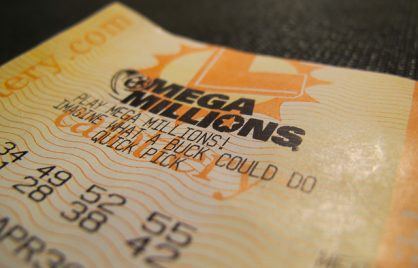Understanding All-In Poker Rules: When & Why You Should Go All-In

In poker, “all-in” refers to the action of a player betting all of their remaining chips. You should go all-in if you have an excellent hand and want your opponent to call, or a terrible hand and want your opponent to fold. Or perhaps when you don’t have a lot of chips relative to the pot (e.g. if there’s $75 in the pot and you have $50 in your stack).
Few moves carry as much weight as the all-in bet. The powerful maneuver can present a make-or-break decision for both you and your opponent. Let’s explore the rules, tactics, and psychology behind this high-impact play.
What Does All-In Mean In Poker?
All-in in poker means betting every chip you have. When you declare, “I’m all-in,” you’ve committed your entire chip stack.
(Yes, in poker, verbal is binding. Announcing a poker all-in is the same as physically pushing all your poker chips in the middle.)
This is specifically for No Limit Texas Hold ‘Em poker, where you can bet any amount you want – unlike Limit poker, where your bets are capped. In Limit poker, you can only end up “all-in” if your remaining chips are fewer than the current bet or raise limit.
What Are The Poker All-In Rules?
The beauty of No Limit Hold ‘Em is that you can go all-in whenever it’s your turn. However, there are a few caveats to be aware of.
1. Verbal is binding
As stated above, announcing, “I’m all-in” is the same as manually betting.
2. You can go all-in with one chip
Experienced players might softly say “all-in” and throw one chip in the middle. Do not be deceived and think this is them only betting a singular chip – they are betting their entire stack. When in doubt, you can always turn to the dealer for clarification and ask, “Are they all-in?”
3. Your hand may be revealed
If an opponent calls your all-in bet, prepare for your cards to be flipped over for everyone to see. Poker tournament dealers will always lay the cards face-up. Cash games won’t always have this done in practice, but most casinos have a rule where any player at the table can say “all hands” and the cards can be exposed. This happens after the action is completed.
4. Players may re-raise after an all-in bet if the all-in constitutes a full raise
One of the most crucial poker all-in rules to know is whether or not it re-opens the action. For example, if somebody raises and you go all-in, can that person reraise again? It depends on how much your all-in is for, and whether it qualifies as a full raise (a full raise is equal to or greater than the size of the previous bet or raise).
Here’s an example:
- Person #1 bets $5
- Person #2 goes all-in for $6
- Person #3 calls the $6
According to poker all-in rules, can Person #1 reraise again and make it, say, $20? (This would probably be very unsettling for Player #3).
The answer is no, because Player #2’s all-in of $6 is not a full raise from the previous bet. In poker, the ability to reraise requires the previous incoming bet or raise action to be at least a full bet or raise.
However, let’s try it this way:
- Person #1 bets $5
- Person #2 goes all-in for $12
- Person #3 calls the $12
Can Person #1 reraise again? Absolutely – this completely abides by the poker all-in rules as it constitutes a full raise.
Maybe they’ll increase the price to $40, which would put Person #3 into an unfortunate position. They probably thought their hand was worth $12… not $40.
To avoid finding yourself in these shoes, you’ll need to pay attention to the size of the all-in jam vs. the original bet or raise.
5. You can always go all-in – even if it’s for less than the bet size
If someone bets $80 and you only have $60, you can still call the bet by going all-in. Now, you can only win a multiple of your all-in amount. For example, if you win the hand, you would win $120 (your $60 bet plus your opponent’s $60 bet, but not their additional $20).
6. When there are multiple players involved in a hand, the dealer will usually create a side pot after an all-in
Let’s take the same example. Someone bets $80. You only have $60 and go all-in for the rest of your stack, but another player in the hand calls the full $80 bet. The dealer will then designate a main pot and side pot.
The main pot will contain $180 ($60 x 3 players). The side pot will be just between the other two people, since they have more chips remaining.
You would only be able to win the main pot, because you wouldn’t have contributed to the side pot.
When Should You Go All-In?
You can go shove/jam/ship/go all-in at any time, but you should keep the pot size in mind. Generally, going all-in is most appropriate when you have a pot-size bet or less.
- If there’s $75 in the pot and you have $50 in your stack, is this a good time to go all-in? Yes, because your stack-to-pot ratio is less than 1:1. You have under a pot-sized bet left in your stack! This would be a good time to go all-in with the right hand.
- If there’s $75 in the pot and you have $500 in your stack, is this a good time to go all-in? Not likely. When you have a good hand, you’ll probably scare your opponents away into a fold. It’s also not a good time to bluff – you’re risking $500 to win $75. The price is bad.
Poker tournaments force all-ins much more than cash games. In a poker tournament, the blinds increase – it gets more costly to play a single hand. Sometimes players will be pushed all-in automatically!
This can happen when, say, you only have 400 chips left but the big blind is 500 chips. For this reason, players start shoving all their chips in the middle preflop before they get to this point (they want to avoid the dreaded auto all-in).
It’s common to go all-in before the flop even with bad hands in poker tournaments as a tactic to “steal the blinds” – hoping everyone folds and winning chips by default. It’s an extreme all-in bluff!
Why Would You Go All-In?
When you don’t have a lot of chips relative to the pot, it makes sense to go all-in much more frequently. This applies to both tournaments and cash games. Above we included that going all-in preflop is a vital tournament maneuver.
What’s more polarizing is going all-in on the river – the final betting round in poker.
There are now no more cards to be dealt and you know your final poker hand ranking. Because your hand is determined and cannot improve, you should only go all-in if you have an excellent hand (and want your opponent to call) or a terrible hand (and want your opponent to fold).
A good example of going all-in would be if you had Jack-Ten on 9-8-7-2-5. You have a straight! (The “nuts” – no other hand can beat you). You would want to go all-in here for value. Alternatively, you could have Queen-Ten and go all-in as a total bluff. You’re going all-in here hoping to apply max pressure and convince your opponent into a fold.
What you don’t want to do is go all-in with a hand like Ace-Eight. Your hand isn’t good enough to warrant committing all your chips in the middle, nor is it bad enough to turn into a bluff. This is a time you should check and not bet if given the option.
The strategy behind going all-in on the river involves only your very best hands and your very worst hands.
This will really put your opponent to the test. Balancing river shoves between your strongest and weakest hands makes it nearly impossible to determine whether you’re full of air or whether you’ve got the goods.
What Do You Do If Someone Else Goes All-In?
Keep the same philosophy in mind when analyzing your opponents – they are likely either begging for you to call or begging for you to fold.
Most people, however, under-bluff – they are not bluffing at a high enough frequency to be professional poker players. The average player is slanted towards value hands rather than bluffs.
You should usually fold to an all-in bet against the majority of opponents, unless you are near certain you have them beat. They’re probably not bluffing as much as they should be, theoretically.
The poker term for the best possible hand at any given moment is simply “the nuts.” When you have the nuts, there is no hand that can beat you. Many players only go all-in with the absolute nuts.
Fun fact: The poker term “nuts” comes from the Wild West – if a player bet absolutely everything they had, someone would remove the nuts from their wagon wheels so they couldn’t get away. It was thought that a person wouldn’t bet their horse and wagon without having an unbeatable hand (the nuts!).
The Best “All-In” Poker Moments
- One of the greatest examples of this happened at the 2016 World Series of Poker Main Event. In this spectacular hand, James Obst has a full house and Michael Ruane has a straight flush. Can James fold to an all-in shove? Would Michael shove a worse hand? You can watch the all-in river action below. This hand exemplifies strength vs. strength.
- Another legendary hand happened at the final table of the Season XVI WPT Rolling Thunder Main Event. Ian Steinman rivers a fantastic set of kings but there’s a straight possible – laying the groundwork for an extremely polarized all-in maneuver. You can also watch professional poker player and card room owner Doug Polk’s analysis in this video.
- On a personal note, one of my favorite all-ins was when I made the 2021 World Series of Poker Tag Team final table. I missed my straight draw… and decided to go all in. We were at the river in this monumental event and I had nothing!
When my opponent asked, “Will you show if I fold?” I had to think quickly. If I said no, that I wouldn’t show her my cards, she’d probably call my bet because she was curious. If I said yes that I would show her, she might think that I was trying to convince her to fold, and call as a response.
Instead I said, “I’ll show you one.” I knew that this clever compromise of offering to show her one card would satisfy her curiosity and compel a laydown. She folded instantly!
Lead image credit: F8 studio/Shutterstock


